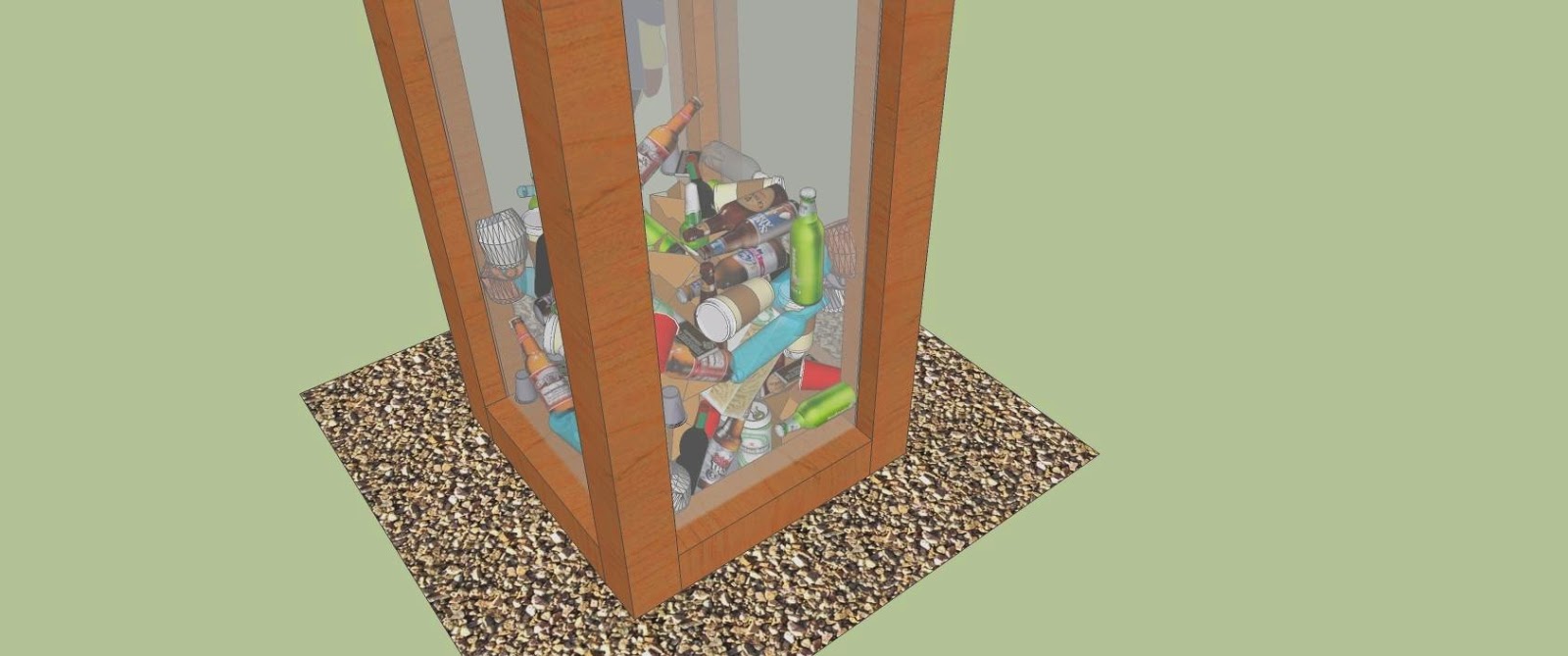By
Taryn Plumb |
GLOBE CORRESPONDENT
JULY
24, 2014
MARK
LORENZ FOR THE BOSTON GLOBE
CYNTHIA
SCHARTMAN/ANDREW SIDFORD ARCHITECTS
Take
a walk around your neighborhood, and you might be surprised by the
number of discarded items strewn along the side of the road.
Carol
Baum certainly was, so much so that a little more than two years ago,
she began picking up litter one day a week on a 2-mile loop around
her Newbury home and cataloging everything she found.
All
kinds of bottles, cigarette butts, plastic bags, and takeout
containers are among the more common items, but some of her other
finds are baffling: the top of a toilet tank, containers of rat
poison, carbon dioxide canisters for air rifles, a child’s bicycle,
a frozen diaper, and hundreds upon hundreds of nails.
“It’s
just distressing that people don’t take better care of the place
they’re living,” said Baum, 71, a
retired ESL teacher and lifelong painter.
But
rather than remain a silent steward of the environment, she’s
turning her weekly trash retrievals into a public awareness campaign.
In
mid-June, she launched a Kickstarter
campaign to
fund a public art project, what she’s dubbed a “trash tower.”
To be framed by cedar and transparent plastic, it will essentially be
a giant receptacle that she plans to fill every week for a year with
the detritus retrieved on her regular route.
The
12-foot-tall tower will be installed on the grassy area in front of
Newbury Elementary School on Hanover Street, with a large signboard
announcing various decomposition and recycling facts.
“I
hope people will change their behavior, if they’re litterers,”
said Baum, whose work has been shown at various local galleries.
“It’s good to have the elementary school involved, because that’s
when children learn those behaviors. And I hope the message from the
Kickstarter campaign gets out to a broader audience.”
It
already has. When she launched the campaign on June 17, she was
asking for $3,000 to cover the cost of materials: four posts; four
Lexan plastic panels; a cover, lock, and ladder for the tower; and
plywood, posts, and paint for the signboard.
In
just five days, the project was fully funded — and then some. She
raised $4,724, with 154 backers from several states and as far away
as Germany, Australia, New Zealand, and Portugal.
“A
lot of the donations have come from people I don’t know, which is
surprising and wonderful,” Baum said.
One
backer, Mark Gillan, called the tower idea a “wonderful concept”
in a posting on the Kickstarter website and a “great way to give
people perspective on this issue.”
Another,
Alessandro Cordova, was even moved to do something similar.
“I
was so impressed ... because this is something I have been thinking
about doing myself and didn’t find the courage to,” he said on
the site. “You inspired me.”
Everything
over the initial $3,000 donated will be used to dismantle the tower
once it’s full, restore the lawn around it, and purchase
educational books for the school, such as “Don’t Throw That
Away,” “The Adventures of a Plastic Bottle,” and “Recycle! A
Handbook for Kids.”
The
goal is to have the tower — which will be built by students in the
carpentry program at Whittier Vocational Technical Regional High
School in Haverhill — up by the fall, said Baum, who also created a
related curriculum that she plans to disseminate to elementary school
students.
The
other educational piece will be the signboard, which will display
statistics on decomposition
times. According
to the National Park Service, it takes one to 12 years for a
cigarette butt to break down; 50 to 100 years for an aluminum can;
and an estimated 1 million years for a glass bottle.
As
environmentally conscious as many people have become in recent years,
litter does remain a prevalent problem, according to the nonprofit
Keep
America Beautiful.
While
the actual amount of overall litter is down 61 percent since 1969,
the amount of plastic litter has increased 165 percent over those 45
years, based on a recent study done by the organization. All told,
there are an estimated 51.2 billion pieces of litter on roadways
nationwide.
As
Baum has found herself, the most predominant items are tobacco
products, paper, and plastic, according to the organization.
In
her weekly trips — she does the 2-mile route every Tuesday morning
— Baum has picked up thousands of cans, bottles, and cigarette
butts, not to mention the occasional odd item such as an intact glass
motorcycle windshield, X-rated paraphernalia, and a plastic bag full
of dog poop.
Until
her retirement in 2011, she said, “I never had time to really do
anything for the community.”
So
one day in March 2012, she decided to pick up the trash she was
noticing on the road where she had walked, jogged, and ridden her
bicycle for years.
“I
thought, ‘Now I won’t have to do this again for three months,’
but it was back right away,” she said. “I just made the
commitment to pick up litter once a week.”
And,
she added, “There’s a lot more road that needs to be picked up.”
Original
story link.
©
2014 BOSTON GLOBE MEDIA PARTNERS, LLC


No comments:
Post a Comment